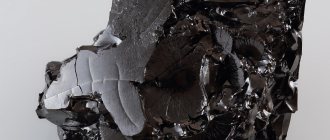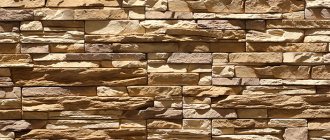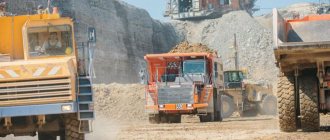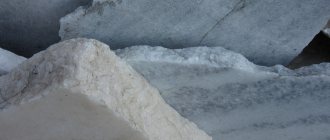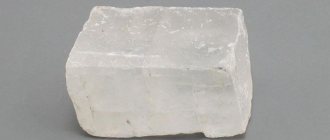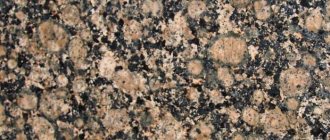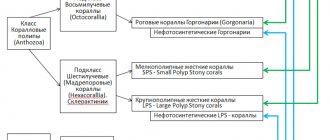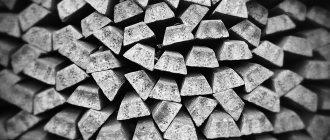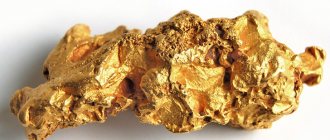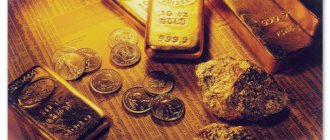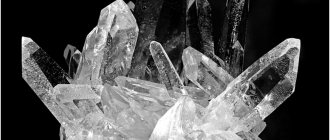4.4
Average rating: 4.4
Total ratings received: 61.
4.4
Average rating: 4.4
Total ratings received: 61.
Coal is a solid combustible mineral that has been used by humans for heating rooms since ancient times. In addition, hard coal is successfully used in various industries. In the article we will briefly present information about the properties of coal, a description of its types, methods of extraction and use.
What is coal
Coal is a mineral whose extraction is necessary for human life. With its help, many processes are carried out that require thermal effects, and rare chemical elements are extracted. Previously, stoves were heated with it, but this is becoming more and more a thing of the past.
Externally, it is a shiny or matte, uneven black or dark brown specimen that resembles a stone, but is not one. Unlike stone, it crumbles in your hands when pressed and burns.
View this post on Instagram
Posted by Kyzyl Segodnya (@kyzylsegodnya) Oct 9, 2022 at 8:14 am PDT
Storage recommendations
To prevent coal from losing its original properties, it should be stored in a cool and dry room, away from direct sunlight. During storage, it is also necessary to control the ambient temperature: if it exceeds 40 degrees, oxidative processes will start in the rock, which can lead to spontaneous combustion of the fuel. The review was prepared by the Noginsk Fuel Enterprise coal-moscow.rf
We have prepared a RUR 500 discount for you using the promotional code UGOLMOSKVARF2019
Classification of hard coals
The classification is based on the chemical and physical properties of the fossil. General division:
- Brown coal was formed later than other types. It has a low combustion temperature.
- Stone is the most common and used type. It is mined in open pits or in mines.
- Anthracite is the most ancient and hard representative. Has the highest combustion temperature of all types.
Brown coal differs from hard coal:
- color;
- lower nitrogen and carbon content;
- because it burns more easily;
- gives more smoke;
- produces less heat.
The mineral is divided according to the degree of carbonization and size. Based on these parameters, labeling was invented and implemented, reflecting the characteristics of a particular type of fossil. It is convenient for industrial use.
Watch an educational video review about the mineral:
By degree of enrichment
Before use, the mined rock is subjected to processing - enrichment. This is an increase in carbon content due to purification from mineral impurities, which increases flammability.
The wet method is often used - the fossil is loaded into an aqueous environment, in which separation into impurities and stone occurs. This is due to the fact that mineral supplements have a lower density. Machines for such enrichment are called jigging machines.
Industrial division according to the degree of mineral enrichment:
- Industrial products. Used in metallurgy.
- Concentrates. They produce energy for power plants and heating.
- Sludge is fine coal dust. It is used for the needs of the population; for this purpose it is pressed into briquettes.
According to the degree of carbonization
Coalification is the process of converting peat into brown coal or stone into anthracite. This is the degree of carbon saturation of a particular piece of fossil, which determines its properties - flammability, sinterability, heat of combustion. Depends on age - the younger it is, the lower the degree of carbonization.
Anthracite has the highest degree of carbonization, bright coals of grades M and D have the lowest, the remaining types are of medium degree.
By size
Mined minerals differ in length and width (this is called a fraction), therefore there is a classification where pieces of a certain size have their own name, abbreviated by one letter.
Sometimes this division is called a grade. Although a letter designation is used, this has nothing to do with brands.
Classification by size (fractions):
| Name | Size, mm |
| Slab (P) | More than 100 |
| Large (K) | 51–99 |
| Walnut (O) | 25–50 |
| Small (M) | 13–24 |
| Seed (C) | 6–12 |
| Shtyb (Sh) | Less than 6 |
| Private (R) | Unsorted, containing pieces of different sizes |
Coal grades
The mineral is divided into grades, the division is based on composition and combustion ability:
- long flame (D);
- gas (G);
- gas fatty (FG);
- fatty (F);
- coke fatty (QF);
- coke (K);
- lean sintering (OS);
- skinny (T);
- low-caking (SS);
- semi-anthracite (PA);
- anthracite (A).
Grade D hard coal is most often used in housing and communal services and the energy sector due to the following properties:
- a lot of volatile substances (from 39%);
- little sulfur (less than 0.5%);
- little ash;
- calorific value 4700–5400 kcal/kg is a good indicator;
- water content – 15–16%;
- high heat transfer.
The stone has a bright shine and is mined in the Krasnoyarsk Territory and Khakassia.
Enrichment degree
Depending on the purpose of use, various types of coal can be purchased. The properties of the fuel become clear based on the degree of its enrichment. Highlight:
1. Concentrates. Such fuel is used in the production of electricity and heat.
2. Industrial products. They are used in metallurgy.
3. Sludge. This is a fine fraction of coal (up to six millimeters), as well as dust resulting from rock crushing. Briquettes are formed from the sludge, which have good performance properties for household solid fuel boilers.
Origin of coal
The mineral began to form long before the appearance of man. Approximate age: 400–200 million years. Until now, scientists do not have a clear opinion regarding which plant group formed the coal deposits. Most believe that they are fern-like.
There are 4 main theories trying to explain how coal was formed:
- The most common is the formation of peat, and then coal, due to the decay of ferns, mosses, and horsetails. However, this theory cannot explain fossil layers 400–700 meters thick. After all, to form 500 meters of fossils, 2000 meters of peat are required, i.e. plants of the same species had to grow on the territory for millions of years without changes in weather conditions.
- Thermal theory - slow smoldering of plant residues in an environment with a low oxygen content with gradual transformation into ordinary coal, and then into stone. However, plant parts would not be preserved inside the fossils.
- Sea water version. Having fallen into the ocean, the plants underwent a long process of carbonization, being under pressure and without oxygen. The theory is confirmed by marine finds - algae, sand.
- Abiogenic - coal appeared by heating methane in the presence of hydrogen and carbon dioxide. According to this theory, the finds in the layers are not the remains of plants, but pyrolytic graphite, therefore it is impossible to reliably determine the age of the mined minerals.
When mining and processing mineral deposits, surprising discoveries are sometimes encountered:
- vertical tree trunks;
- huge stone blocks weighing up to 73 kg, of metamorphic or volcanic origin;
- products made of gold and metal, which indicates the ongoing process of coal formation;
- mollusks, shells, annelids;
- round objects resembling dinosaur eggs.
Because of its origin, coal is called canned solar energy - plants are able to accumulate it in leaves and shoots.
Environmental impact
Although coal makes an important contribution to economic and social development around the world, its production and consumption causes significant harm to the environment. For example, quarrying affects large areas of land, causes soil erosion, spreads dust, pollutes water, and has a negative impact on local biodiversity.
Underground mining involves the organization of dumps, inside which harmful thermal processes occur for many years and the background radiation increases. Mines are dangerous due to possible ground failures and changes in the water balance of the area.
Reclamation of developments takes a lot of time and requires financial costs. Its main goal is to restore the damaged productive capacity of the land. Various programs include waste disposal, reforestation, agricultural land and recreational areas.
Coal combustion products pose a serious danger. These include toxic nitrogen oxides (NO and NO2), acid rain-causing sulfur dioxide (SO2), and carbon dioxide (CO2), considered the main culprit of the greenhouse effect in the planet's atmosphere. In addition, ash and other solid particles get into the air.
Despite widespread concerns about air pollution from emissions, coal will continue to be used in the near future. Therefore, governments and scientists from different countries continue to make great efforts to find more effective technologies for using this valuable raw material.
Deposits and rock mining
The fossil is widespread - its reserves account for 15% of all land. Three leading countries in coal mining:
- The USA is a world leader. The percentage of deposits is 23 – that’s more than 1,600 billion tons.
- Russia. Deposits are estimated at 13%.
- China. The figure is approaching 11%.
In Russia, hard coal is mined in the Kemerovo region, in the Kuznetsk deposit, where 640 billion tons of minerals are located. The discovery took place in 1721 by M. Volkov. In 1842, P. Chikhachev assessed the reserves of the basin. In the 2nd half of the 19th century, coal began to be mined in Kuzbass.
In Yakutia there is the Elga deposit, its reserves amount to about 2 billion tons, in Tyva the Elegot deposits are promising for development. Other basins are Lensky, Tungussky, Irkutsk, South Yakutsky, Pechersky.
In the USA, the largest deposits are located in the state of Illinois (reserves of more than 360 million tons).
Kazakhstan contains 162 billion tons of fossil fuels. One of the largest fields is Ekibastuz, other basins:
- Shubarkol and Kyzyltal - 2 billion tons each;
- Shoptykol, Mamyt and Eginsay – 1 billion tons each;
- Karazhyr – 890 million tons.
View this post on Instagram
Publication from COAL FIREWOOD TRANSPORTATION (@vezet19_124) January 29, 2020 at 7:26 PST
Deposits of hard coal are indicated on the map in the form of a certain symbol - a black square, and brown coal - a shaded one.
In the Republic of Khakassia, the main deposit is located in the Minusinsk Basin. Development has been going on since 1904. Khakassian coal is mined in the Izykh and Chernogorsk basins.
In Africa, the mineral is mined in the following areas:
- Zimbabwe;
- Mozambique;
- SOUTH AFRICA.
Coal exporting countries by rating, volume indicated in millions of tons per year:
- Australia - 193;
- China – 91;
- South Africa – 69.3;
- Indonesia – 66.4;
- USA – 44.1;
- Russia – 41;
- Colombia - 37.1;
- Canada – 30.6;
- Kazakhstan – 28;
- Poland – 23.
Watch a program about stone mining in Russia:
Physico-chemical properties of stone
The main element of stone is carbon, which is why it burns well and for a long time. In addition, it contains water. The ratio of elements depends on the age of the mineral:
| Coal name | % water | % carbon | % volatile matter | How does it ignite? | How it burns | Heat dissipation |
| Brown | Up to 43 | Up to 45 | Up to 50 | Fine | Fine | Low |
| Stone | Up to 12 | 75–95 | Up to 32 | Great | Fine | Average |
| Anthracite | 1–3 | 85–95 | Less than 9 | With difficulties | Weak, no smoke due to low volume of volatile impurities | High |
Properties:
- specific gravity – 1.5–1.7 g/cm2;
- combustion temperature in the furnace – 700–1100 °C;
- shine – pronounced, with a metallic tint, less often – golden;
- specific heat capacity – 1300 J/(kg × K);
- specific heat of combustion – 5700 kcal/kg;
- fracture – uneven, conchoidal;
- hardness of coal ash on the Mohs scale – 2;
- The shelf life of coal is 6–18 months.
Watch a program where a scientist talks in an entertaining way about the properties of the mineral:
Coalification degree
According to this indicator, they distinguish:
1. Brown coal. This is the same coal, only partially formed. Its properties are somewhat worse than those of higher quality fuel. Brown coal produces low heat during combustion and crumbles during transportation. In addition, it has a tendency to spontaneously combust.
2. Coal. This type of fuel has a large number of grades (grades), the properties of which are different. It is widely used in the energy and metallurgy, housing and communal services and chemical industries.
3. Anthracite. This is the highest quality type of coal.
The properties of all these forms of minerals differ significantly from each other. Thus, brown coal has the lowest calorific value, and anthracite has the highest. What is the best coal to buy? The price must be economically feasible. Based on this, the cost and specific heat are in the optimal ratio for simple hard coal (within $220 per ton).
Application of hard coal in industry
For hard coal used in industry, GOST 32464-2013 is applied - a decree that describes technical requirements, methods for determining the chemical composition, and classification according to various parameters.
The use of the fossil is based on the pyrolysis reaction of coal - heating without any reagents. In modern industry, various chemical additives are increasingly used to speed up the reaction. Pyrolysis stages:
- condensation;
- polymerization;
- aromatization;
- alkylation.
Separately distinguished:
- Low-temperature pyrolysis occurring at 500–600 °C. This is semi-coking.
- High temperature process, or coking. It runs at 900–1100 °C.
All coking products are divided into 3 groups:
- Solid - coke. Used in ferrous and non-ferrous metallurgy.
- Liquid – coal tar. More than 250 chemical compounds are obtained from it. The main ones are technical oils, synthetic fuels, naphthalene, benzene, ammonia. Dyes, TNT and saccharin are made from toluene.
- Gaseous – pyrolysis gas. Alternative source of energy and heat.
When processing fossils, the following products used in industry can be obtained:
- vanadium, sulfur, zinc, lead;
- xylene and benzene - used in the paint and varnish industry;
- solid fuel used to heat houses and ensure the operation of enterprises;
- liquid fuel - obtained by liquefying solid fuel;
- illuminating gas used for lighting;
- ash - used in construction.
The fossil belongs to the 4th hazard class, as a flammable substance capable of heating.
For personal use, fossils are used to generate heat. Where there is little wood or it is difficult to prepare firewood, you can heat the bathhouse with coal. Many houses still have stoves. Premises heated with coal warm up well and are acceptable even for harsh winters.
Lighting coal is not easy - you need an armful of firewood, wood chips or splinters, straw, paper. First, several firewood are laid, chips (splinters) are placed on them, and straw is placed on top. They set fire to the paper and use it to set the straw on fire. Then the wood gradually lights up. The rest of the firewood is added as space becomes available. When it's hot, they put in coal. The preparation process pays off with a long combustion time and good heat transfer.
Coal ash is not used as a fertilizer - it contains few nutrients and may contain heavy metal impurities. The only acceptable solution is to use it on highly alkaline soils to normalize acidity - ash acidifies the soil.
Some people suggest grilling shish kebab on it, but you shouldn't do that.
We invite you to watch a foreign program about the situation with mineral resources in Europe:
